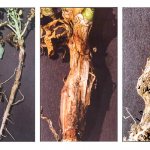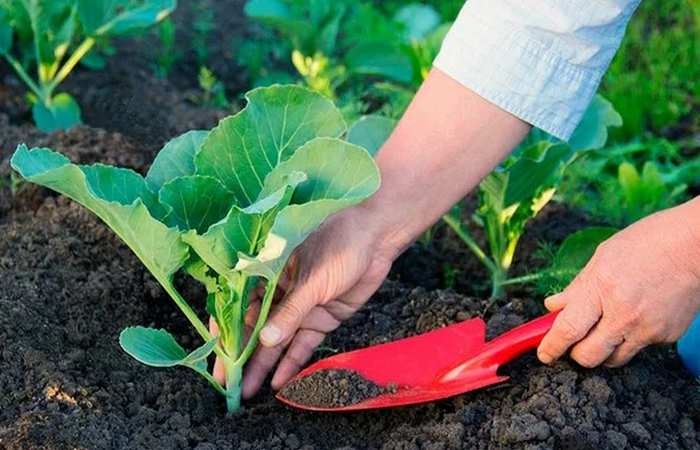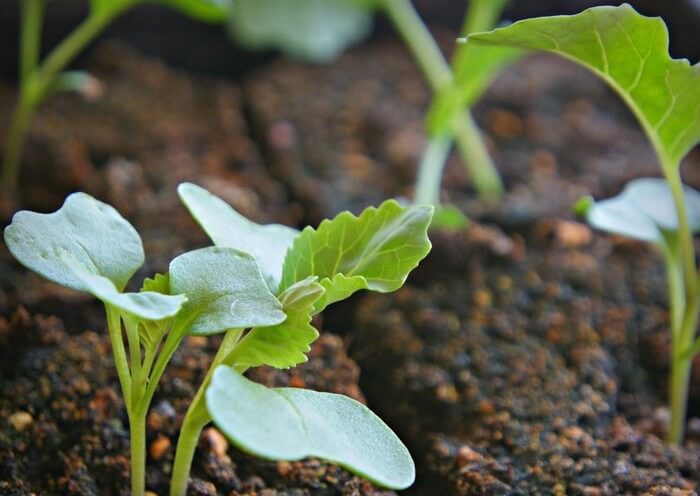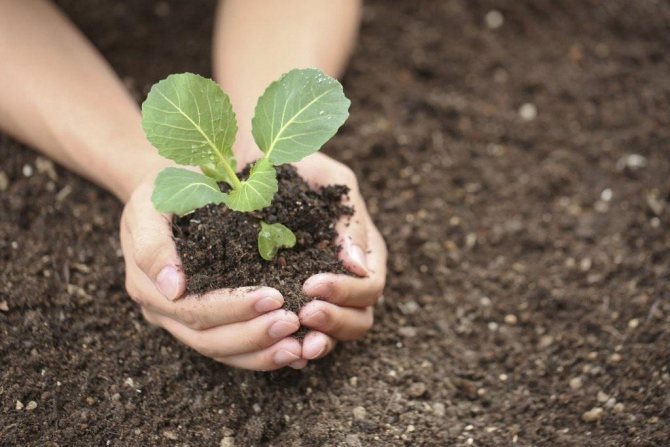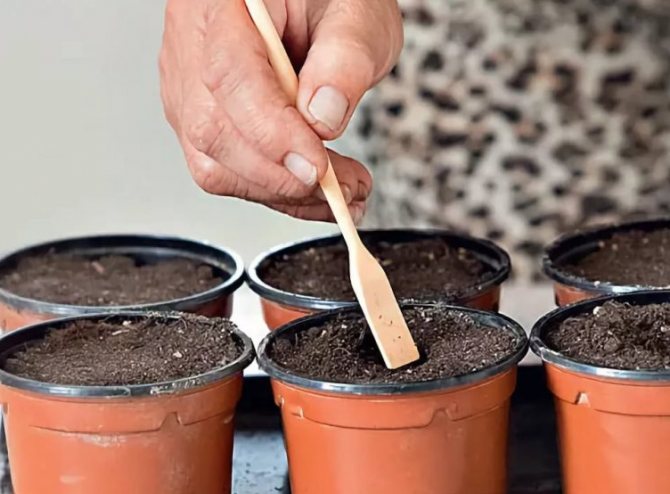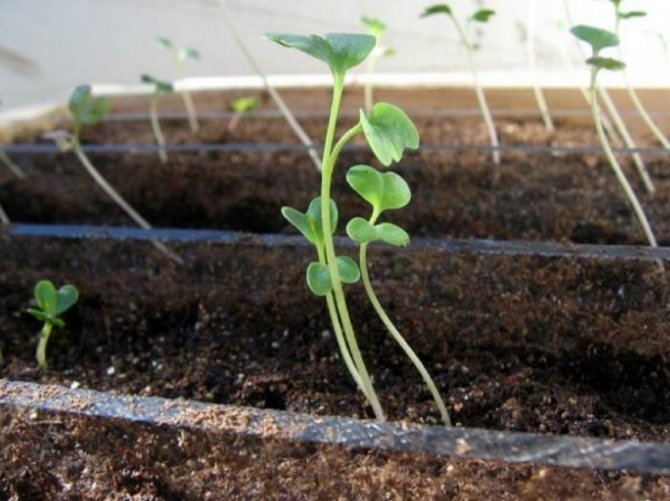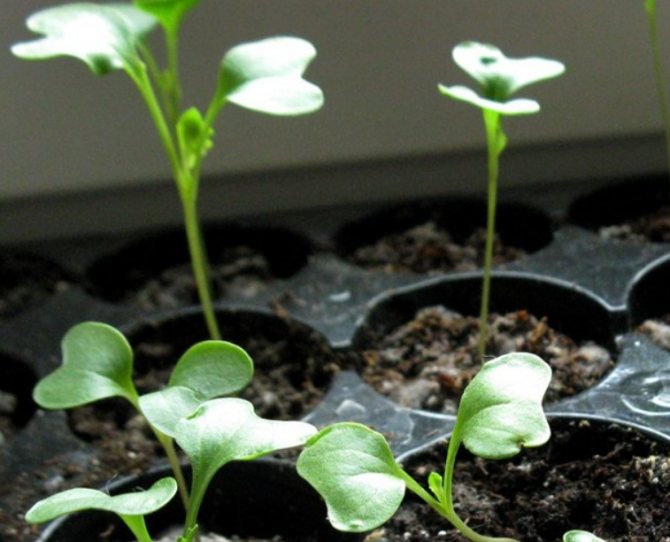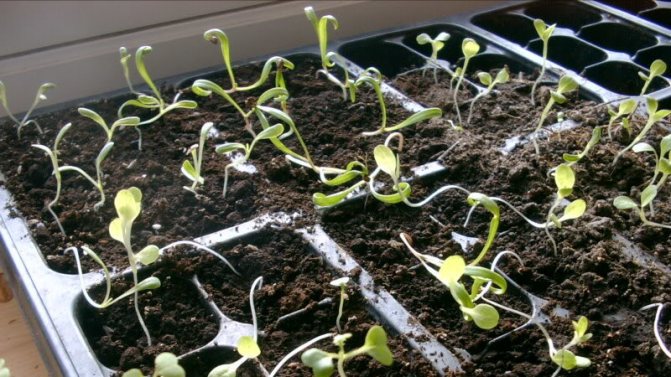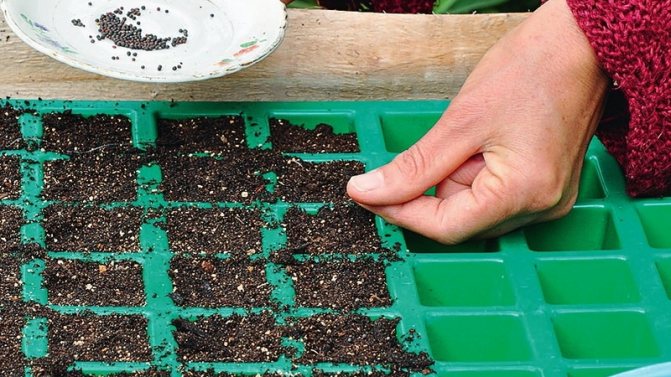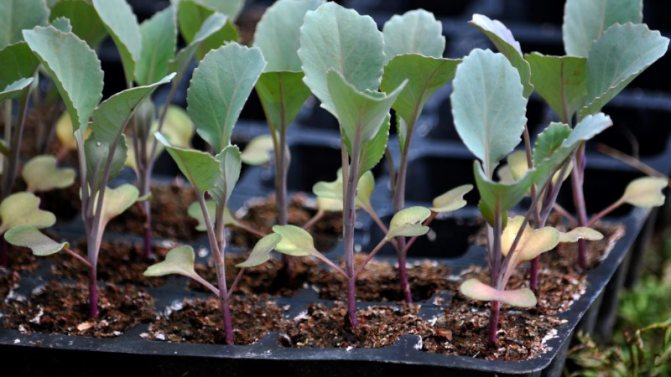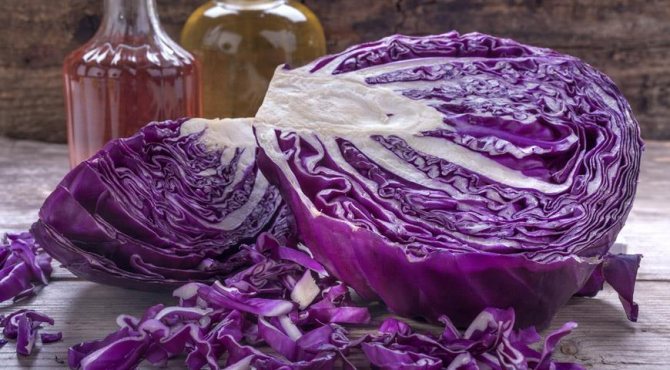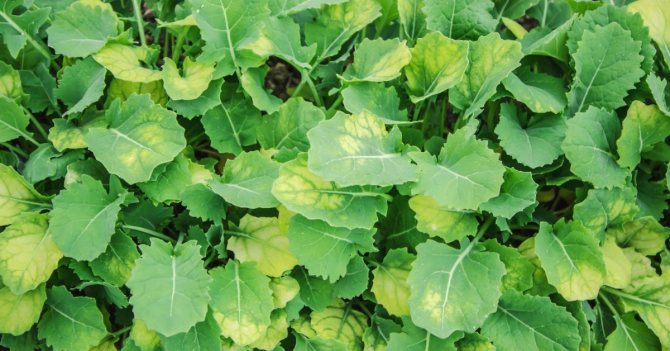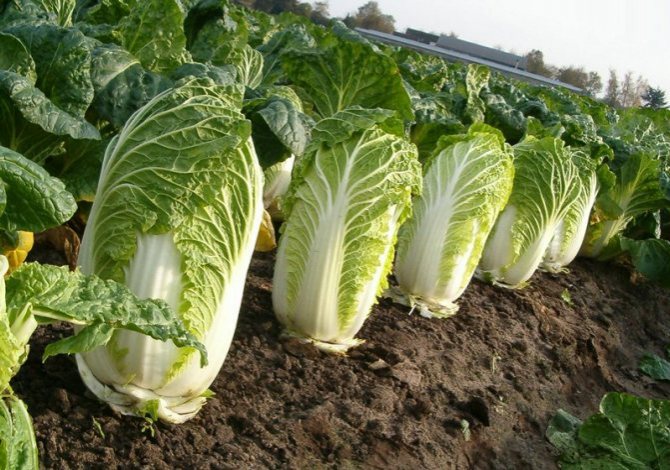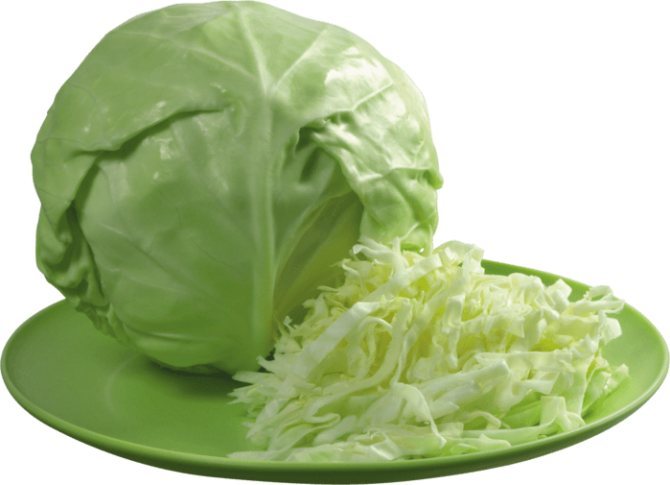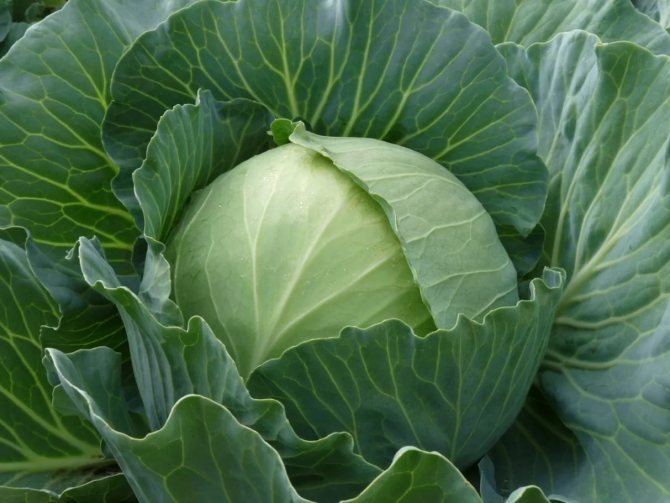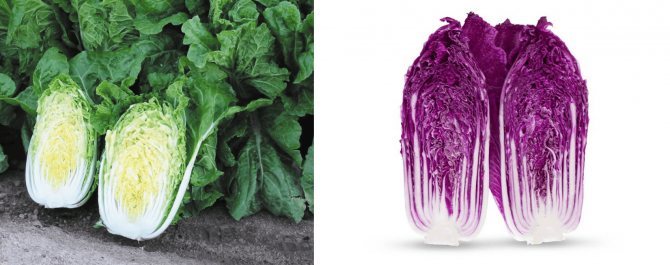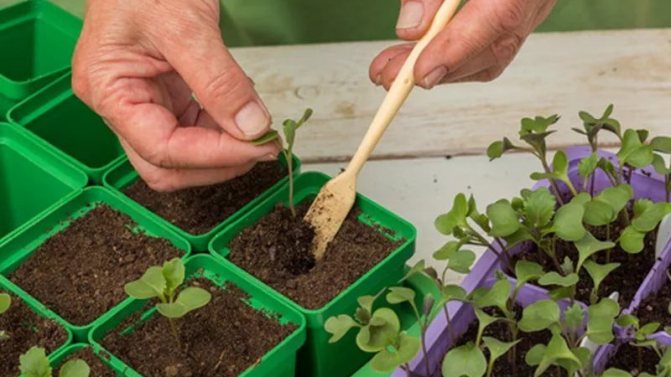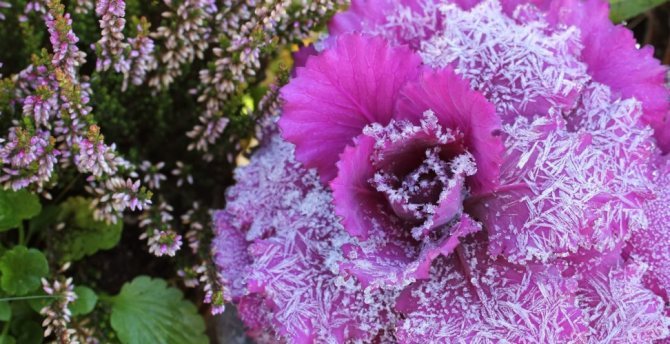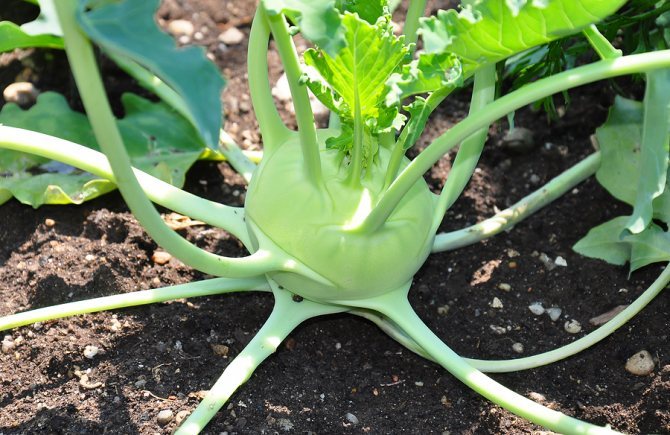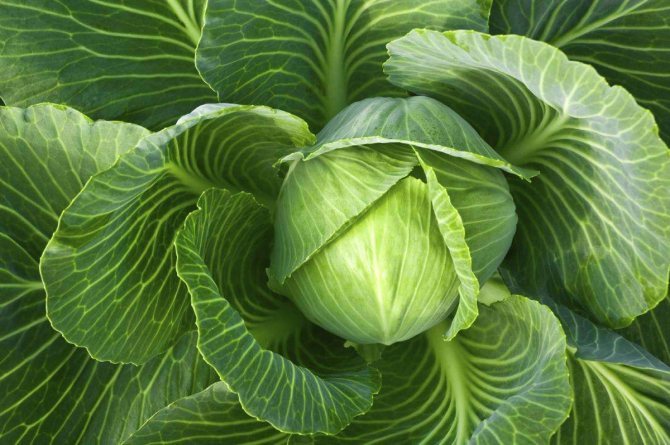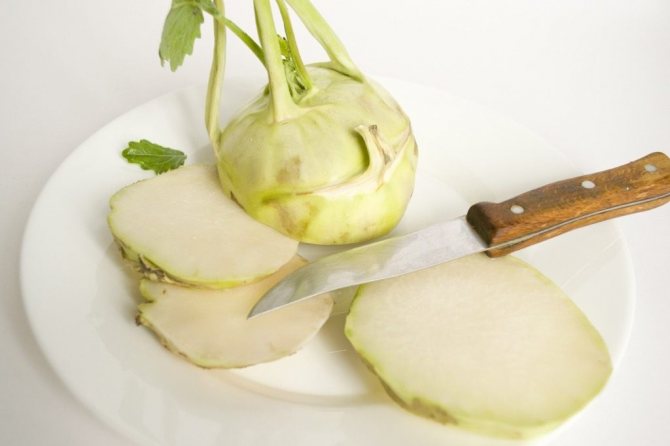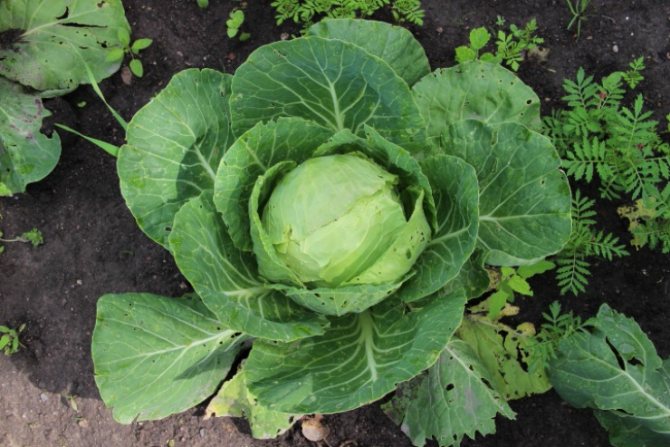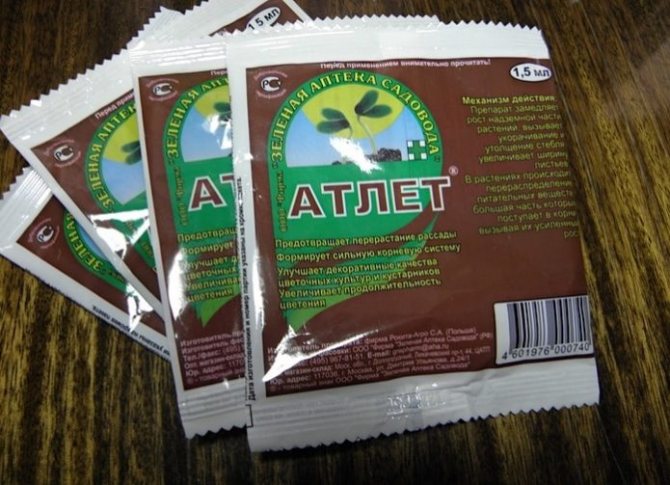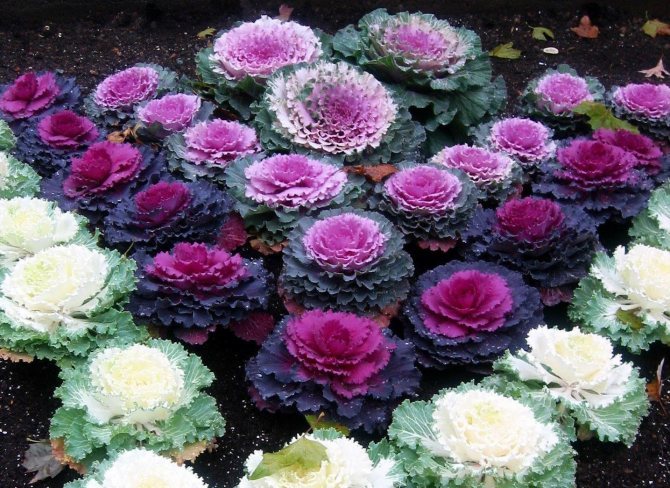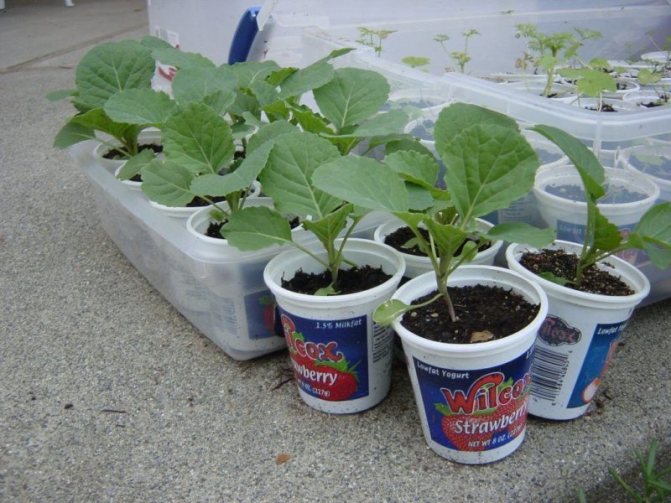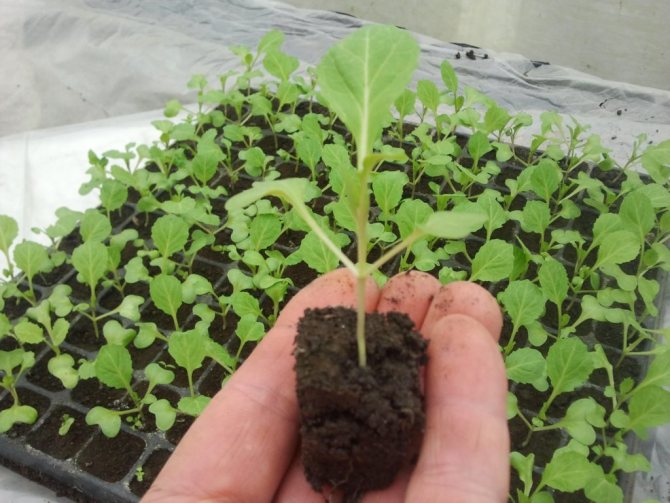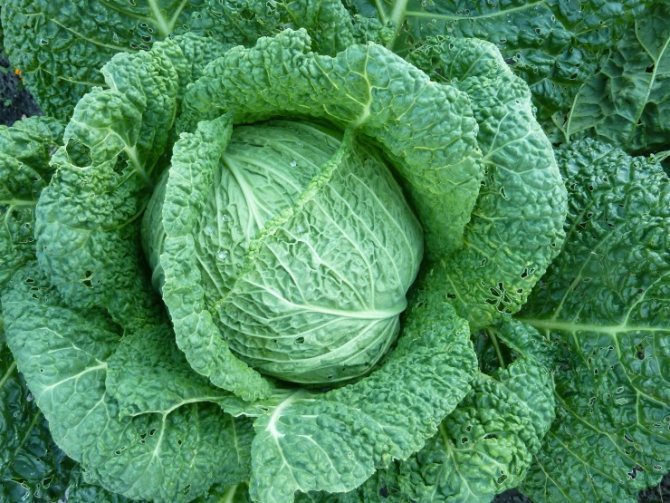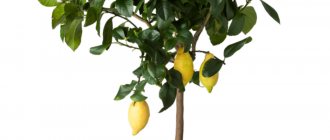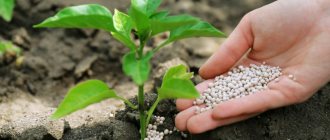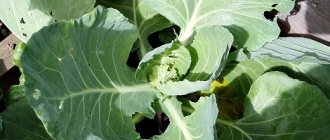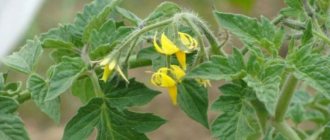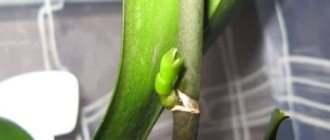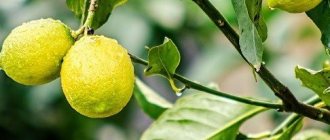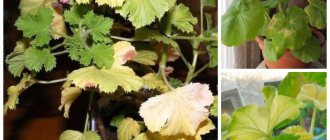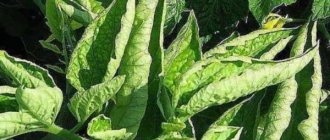Every year, at about the same time, we salt and sauer the cabbage. There are no problems with sauerkraut. But with salty, it sometimes happens that after a while the brine begins to stretch like liquor or like mucus. At the same time, the cabbage itself remains crunchy, but it is already unpleasant to eat it. Why is this happening? And if the brine has already accumulated, is it possible to somehow remedy the situation?
Author of the publication
not Lermontov
Achievement received 04/03/2019
Similar:
There can be several reasons that the pickle in salted cabbage can drag on. The proportion of salt and sugar is violated, the ingredients must be put strictly according to the recipe. We used not special coarse salted salt, but fine iodized salt. The cabbage stood warm for a long time. Perhaps the cabbage itself was not of special pickling varieties, it was slightly frozen, and a lot of mineral fertilizers were used when growing. It is difficult to fix such cabbage, you can rinse it and use it to make filling for pies, stewing, for cabbage soup.
There are several reasons for this. It is possible that you get cabbage, but not always. And if not always, it means that you are making a mistake somewhere. We will now look at some aspects.
As you know, when sauerkraut is fermented, sugar is fermented into lactic acid. Lactic acid bacteria participate in this. And there is sugar in cabbage, but simpler than sucrose, which we tease with sugar. This is glucose, which, in fact, is fermented into lactic acid. It does not always work out, anyhow, the cabbage was fermented as expected.
This can be influenced by the following things: cabbage stands in places where it is very hot, and, accordingly, there is a rapid fermentation. Moreover, lactic acid bacteria are proliferating rapidly. By the way, the mucus that forms is not really scary. These are the bacteria mentioned above, not disease-causing ones. You need to ferment at a temperature of eighteen degrees with a plus. We have analyzed the first reason.
The second is in the form of salt. If the brine was not sticky, you should not put iodized salt. I do not know for what reason, but it gives rise to the viscousness of the brine. Obviously, because cabbage, like all greens, contains starch, and iodine reacts to form such a substance.
The next reason is the amount of sugar. Perhaps sometimes there is more sugar than salt, and therefore fermentation is accelerated.
And there may also be such a thing: are you not fermenting cabbage along with apples, cranberries, beets, lingonberries? This can also affect the viscosity of the brine.
Another reason that you cannot influence. If cabbage is bought, then some fertilizer surplus is possible. Do you know how? The more fertilizer, the “better”. For a cultivated vegetable it may be, but for the eater, far from it.
Several years ago I had to make sure that salt plays a huge role in salting cabbage. Somehow it turned out that we only had Artyomovsk table salt on sale, the cabbage turned out to be white, the brine was wonderful, it never lasted (if everything was done according to the rules). Astrakhan and Iletsk salt are now on sale. Half of the Astrakhan cabbage soon darkens, although the rest is no different from what was obtained before.The situation is worse with the salt-Iletsk product. Maybe they bring in such varieties of cabbage that they are at odds with this salt, but the cabbage does not ferment, softens, crumbles into fibers, smells bad, and this is not only my observation. With the approach of the cabbage pickling season, our people are rushing about in search of at least Astrakhan salt, you can also find from Artem (smuggling is eternal !, but you need to know the place)). By the way, I tried to salt cabbage with Adyghe (Abadzekh) salt. It turns out quite badly, however, it was not possible to test for "strength" - how long it is stored, did a little, 2 kilograms, sold out in a month. And the situation with snotty brine can be corrected in the only way - rinse the cabbage before use, if you don't like the smell, rinse it and process it - cabbage soup or borscht, stew it, make pies-pies.
Dry rot, or phomosis
Dry rot (phomosis) - one of the most dangerous and widespread fungal diseases of cabbage. Phomosis affects cabbage at different stages of development.
Dry rot can affect cabbage seedlings in the same way as a black leg, but unlike a black leg, the cabbage stalk does not turn black at the base, but turns gray. Yellowish-gray, slightly deepened spots appear on the root part of the stem, cotyledon leaves, or on the main root. The stem becomes rotten, dries up and becomes covered with black dots of fungal spores. Seedlings infected with gray rot noticeably lag behind in growth, the lower leaves acquire a bluish or purple color, the stem is bent, dry rot appears in the root part, the plants die quickly. It is no longer possible to get a crop from cabbage seedlings infected with dry rot.
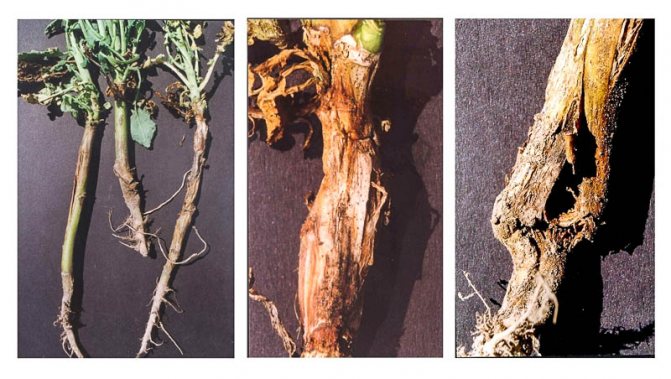
At a later stage in the development of cabbage from infection with dry rot, dry depressed spots appear on cabbage stalks, sometimes with black dots.
Dry rot develops especially strongly on seed plants. Affected plants noticeably lag behind in growth, wither and dry out often even before the formation of pods. If the plant survives to form fruit, then the causative agent of dry rot penetrates the seeds, concentrating its spores in the surface layers of the shell.
Phomoz does not stop its development even during storage of cabbage, especially in conditions of high humidity and high temperatures. During storage of such heads, ulcers on the heads of cabbage increase significantly, the stumps become rotten and dry out.
Dry rot affects the leaves and pods of seed plants: gray spots with black dots appear on them.
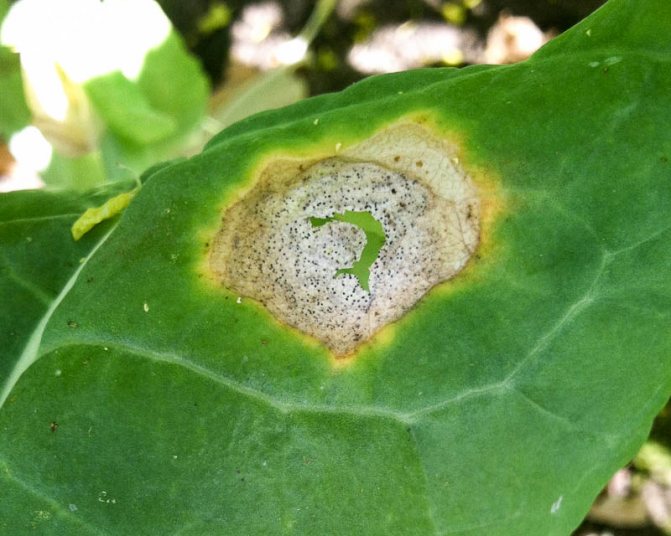

The causative agent of dry rot (fungus Phoma lingam Desm) persists on plant debris, seeds and mother stumps. The development of the disease is facilitated by high air humidity (60-80%), warm weather and the presence of damage, especially caused by the cabbage fly.
During one growing season, the causative agent of dry rot can give from 5 to 8 generations. Dry rot causes great damage to the cabbage harvest due to the loss of individual plants, the death of both the outer leaves and the middle of the fork, which already negatively affects the quality of products, the lack of seeds, as well as the deterioration of their germination.
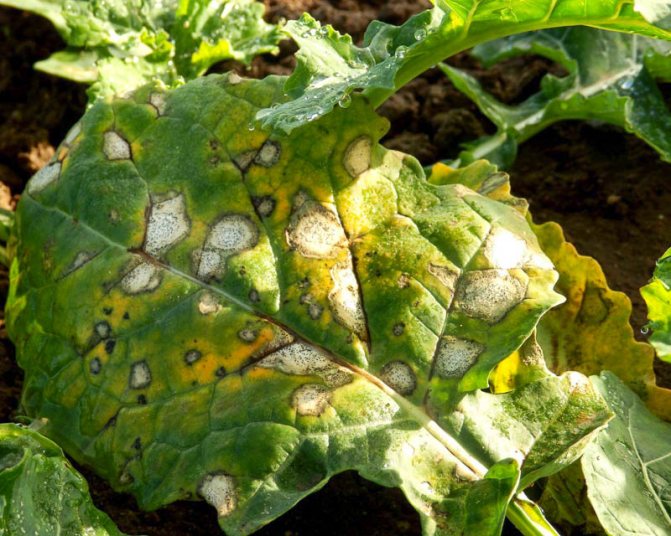

Broccoli
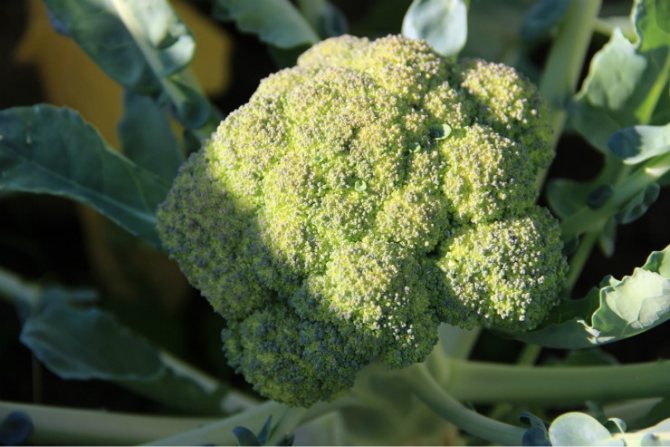

Broccoli also eats unblown bright green buds. Look at the photo - two or three more days and a dense head of cabbage will turn into a rosette of funny, but completely inedible flowers. It's time to harvest!
Broccoli holds the record for vitamin A content among other types of cabbage crops. It is also full of vitamins (especially vitamin C) and antioxidants.
Broccoli is used to make chum mashed soups, casseroles, and salads. But gourmets prefer to savor its exquisite nutty flavor separately from other products.Of course, fresh it is harsh, but if you extinguish the flowers for 10 minutes for a couple, then all the benefits will remain, and it will be easier to chew.
Broccoli also requires abundant feeding and watering throughout the summer season.... Try not to thicken the planting: on some packages with seeds it is recommended to leave a distance of only 30 centimeters between the plants, but this is fundamentally wrong. The best planting pattern for broccoli is 40 x 60 or even 50 x 60 centimeters.
And if you wait 7-10 days after harvesting the central flower heads, then an additional yield of mini-inflorescences will grow on the lateral shoots. In general, I leave broccoli in the garden until the end of October and gradually collect side flowers.
Wet rot, or slimy bacteriosis
The causative agent of mucous bacteriosis is Erwinia carotovora subsp. carotovora (Jones) Bergey, Harrison. Slimy bacteriosis of cabbage - a disease that often develops after a sharp change from warm weather (+ 20-25 ° C) to rainy cold, and primarily on plants damaged by pests or overfed with nitrogen. It is also believed that bacteria can enter cabbage crops with irrigation water. Wet rot most often appears during the setting of a head of cabbage, first affecting the large petioles of the outer leaves and then spreading to the heads of cabbage.
The affected areas with wet rot become mucky, an unpleasant fetid smell of rot, characteristic of all bacteriosis, appears.
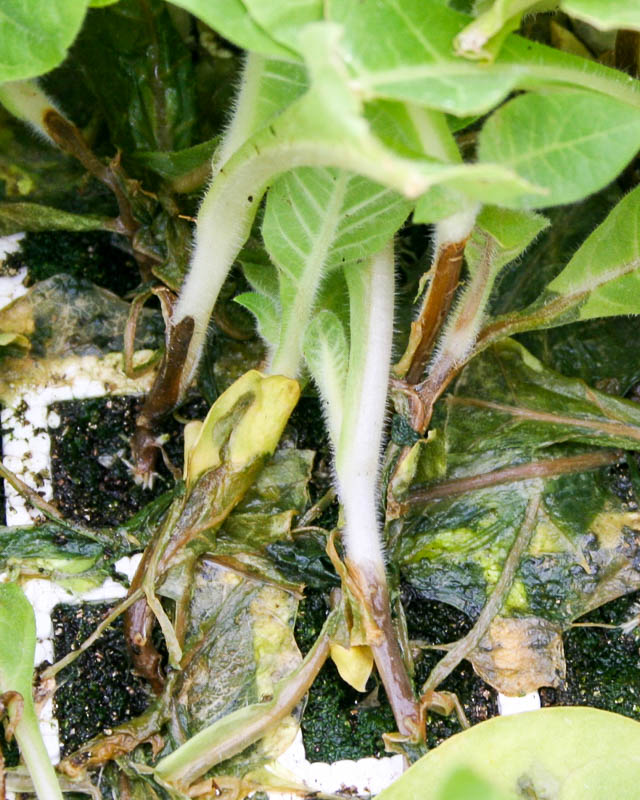

It should be noted that if dry weather with low air humidity occurs when the upper leaves of cabbage heads are affected by mucous bacteriosis, then the diseased areas dry out, become thin and transparent.
Sometimes mucous bacteriosis begins to develop from a stump, while it softens, the formation of a head of cabbage stops. With a strong development of mucous bacteriosis, heads of cabbage fall off the stump before ripening.
Heads of cabbage weakly affected by mucous bacteriosis may seem quite healthy, but it is sometimes given out by a characteristic odor in the cabbage beds. With timely intervention, it is quite possible to preserve such heads of cabbage. If nothing is done, then when storing the affected heads of cabbage, wet rot causes great losses.
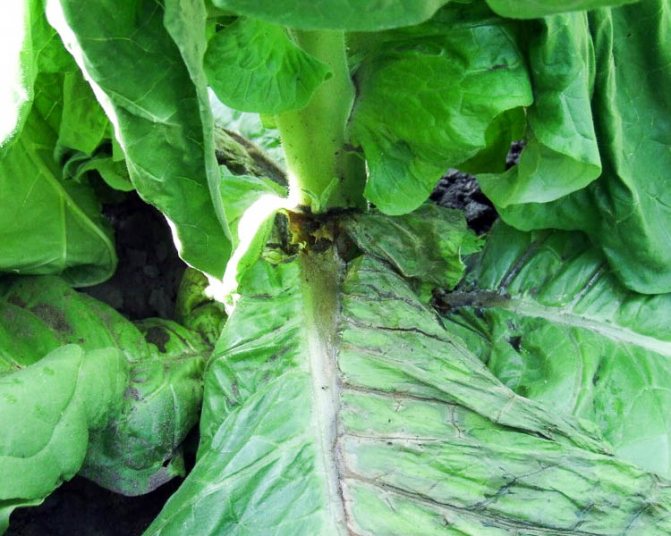

Placing weakly affected heads of cabbage for storage (without visible symptoms of the disease) leads to their further rotting at temperatures above + 3 ... + 4 ° С.
The causative agent of mucous bacteriosis remains in plant debris, in heads of cabbage and in storage rooms, but is not transmitted by seeds. Peduncles are not formed on infected heads of cabbage.
If signs of bacteriosis appear on cabbage, nitrogen fertilization should be excluded. Instead of nitrogen fertilizers, you need to use potassium nitrate: 1-2 tablespoons per 10 liters of water, consumption - 5 liters of solution per 1m2, moderate watering, it is advisable to pour water when watering only at the root.
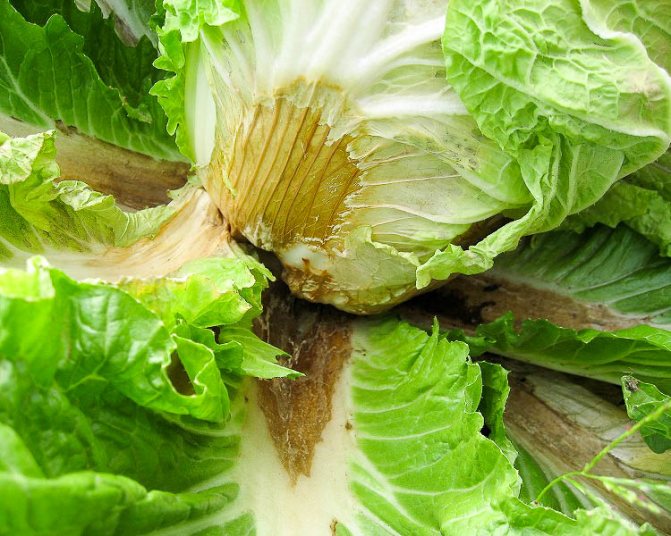

Effective treatments
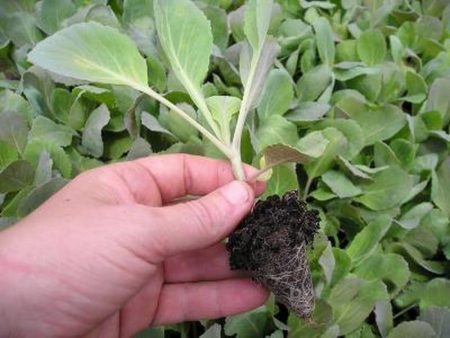

Earlier, we have already noted that seedlings are able to stretch out for various reasons associated with violation of growing rules. Depending on the cause, it is necessary to outline the appropriate measures to correct the current unfavorable situation.
Lighting up
If the seedlings are stretched out due to insufficient illumination, it is urgent to install additional lighting in order to provide daylight hours up to 16 hours a day.
It is necessary to light up not only in the morning and evening hours, but also during the day if the sky is cloudy. For culture, not only the length of daylight hours is important, but also the power of lighting.
Important. For supplementary lighting, phytolamps are used that emit light of a suitable spectrum. The wavelength range of the red and blue spectrum should be at the level of 400-660 nanometers.
Decrease in temperature
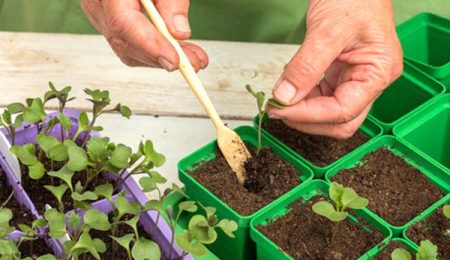

If your plants are stretched out due to the high temperature, you need to create conditions typical for a temperature shock.For this, boxes with seedlings for 5 days are placed in a room where the temperature does not exceed 4 degrees Celsius. After this period, the temperature is raised to 10 degrees and the seedlings are kept in such conditions for another 10 days.
Then the boxes with seedlings are returned to their original place and they are grown for 10 days at a temperature of 15 degrees. Then they keep the temperature at 20 degrees during the day, and only 9 degrees at night.
Restoring the correct watering regime
If you find that your seedlings are stretching due to excess moisture in the soil, you need to stop watering for 3 days.
To resume watering, you should not wait for the soil to dry completely, since the roots may die due to soil drought.
Then the soil is watered approximately every 4 days, wetting the soil layer by 6 mm. Irrigation water should be clean, settled and have a temperature of 20 degrees.
Optimizing your diet
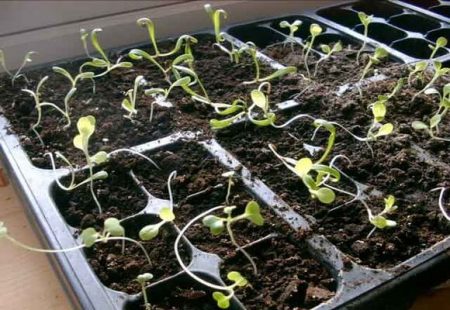

If, when composing a nutrient mixture for seedlings, you neglected fertilizers or applied them insufficiently, then the seedlings could be pulled out due to the poor soil.
On such soils, seedlings usually have small and pale leaves. Its stems can also have a modified appearance - they are thin and tough.
Advice. In this case, it is necessary to urgently resort to the introduction of phosphorus-potassium fertilizers. In some cases, nitrogen fertilizers may also be needed.
Approximate feeding composition:
- potassium chloride - 1 g;
- ammonium nitrate - 2.5 g;
- superphosphate - 4 g;
- water - 1 l.
If there is an excess of fertilizer in the soil, the stalk of the cabbage will also stretch out, the leaves will increase in size and acquire a dark green color. In this case, suspend all fertilizing and wash the soil with abundant watering.
Growth regulator treatment
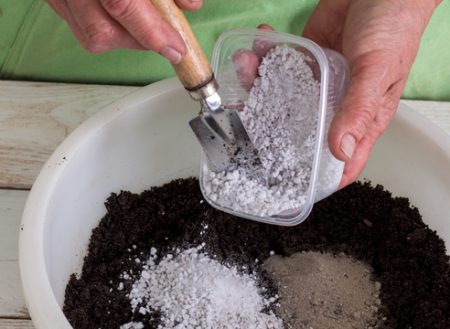

When the stretching of seedlings occurs at the stage of formation of the first true leaves, the use of growth regulators will help to stop this negative process:
- "Amulet";
- "Athlete".
These drugs can be used for the prevention of stretching and for treatment, when the first symptoms of this phenomenon are detected.
It is allowed to introduce growth regulators by spraying on the leaves and by watering at the root of the plants. After processing, the root system begins to grow more intensively, and the growth of the vegetative part of the plants stops.
Picking
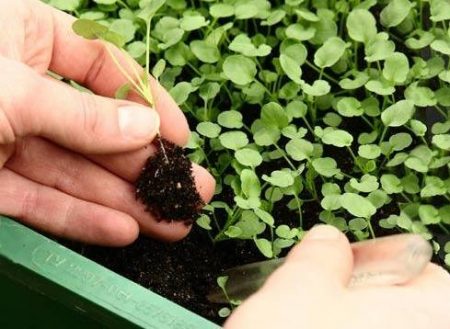

If the degree of elongation of the seedlings is quite strong, then the previous measures are unlikely to help. In this case, the seedlings must be transplanted immediately. You can move them to this place:
- in a separate small container if they grew in a seedling box;
- into a spacious container if grown in shallow cups;
- to the garden bed, if the weather and the age of the seedlings permit.
When transplanting, the seedlings are buried to the cotyledon leaves. If the seedlings do not yet have true leaves, and they are very elongated, they must also be dived, but not so deeply buried.
Removing multiple leaves
When the seedlings are grown in separate and fairly spacious containers and they are pulled out, you can resort to breaking off a pair of lower leaves. After such a procedure, the growth of seedlings is suspended, and the roots are strengthened. If the effect was insufficient, then the procedure can be duplicated in a week.
Adding earth
If there is a margin of height in the boxes with elongated seedlings, you need to add earth to the stems. This approach is no less effective than picking.
You can use the sprinkling method to raise the soil level to the bottom pair of leaves. Thanks to this, additional roots of the plant will grow.
Loop formation
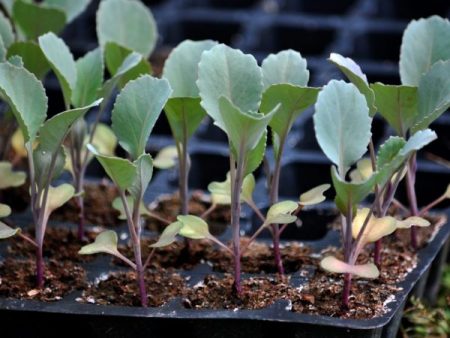

If the stalk has lengthened too much, it is added dropwise, having previously folded in a loop. To do this, for a while, watering of seedlings is reduced to a minimum and the temperature is lowered to 5 degrees Celsius.
From such an impact, the stem becomes sluggish and it can be rolled into a ring in a depression.The twisted stalk is sprinkled with soil, then this soil is compacted and watered.
After rehabilitation measures on elongated seedlings, if success is achieved and she has stopped growing vigorously, she is provided with the same care as for ordinary seedlings, strictly adhering to all requirements.
Re-sowing seeds
It happens that the seedlings are stretched out so much that any measures for its rehabilitation seem meaningless and doomed to failure. In such a situation, the best option would be to discard the overgrown seedlings and re-sow the seeds on the vacated area.
In this case, the heads of cabbage will most likely appear later than usual, but they will be of better quality than those that could have been grown from defective elongated seedlings. And it's not a fact that they would have grown at all.
Vascular bacteriosis
Vascular bacteriosis affects not only cabbage, but also cauliflower, Brussels sprouts, broccoli, kohlrabi, as well as radish and radish, and it is found on plants at all stages of their development. The causative agent of vascular bacteriosis is the bacteria Xanthomonas campestris pv. campestris Dowson.
The first signs of vascular bacteriosis appear on cotyledon leaves in the form of lightening of their edges. Plant growth slows down, they twist, wither and may die.
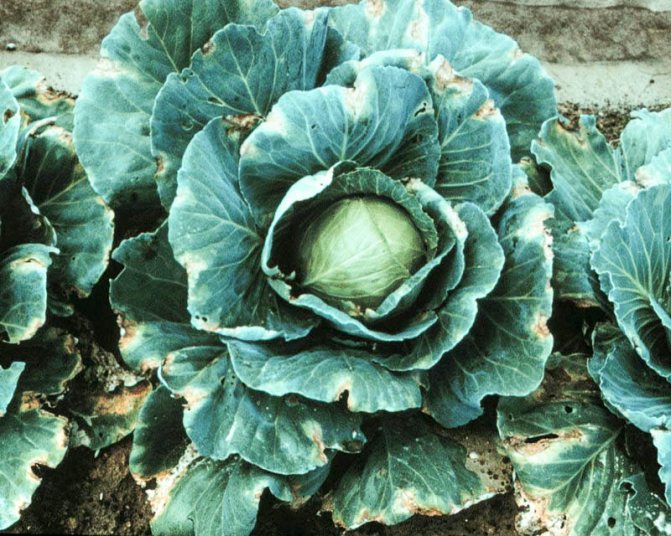

In older plants, vascular bacteriosis causes wilting, yellowing of the ends of the leaves and the appearance of a network of blackened veins on them. On the cut of the veins of leaves and stumps of diseased plants, the defeat of the vascular bundles in the form of black dots or streaks is clearly visible, which gave the name to vascular bacteriosis - black rot. Later, the affected leaf zones acquire a dark brown color and die off.
In the later stages of the disease, the black color from the affected leaf may extend to the main stem, where the darkened vascular system can be clearly visible up or down the stem. Affected plants are stunted. The lower leaves fall off, the heads of cabbage remain underdeveloped or lose their presentation.
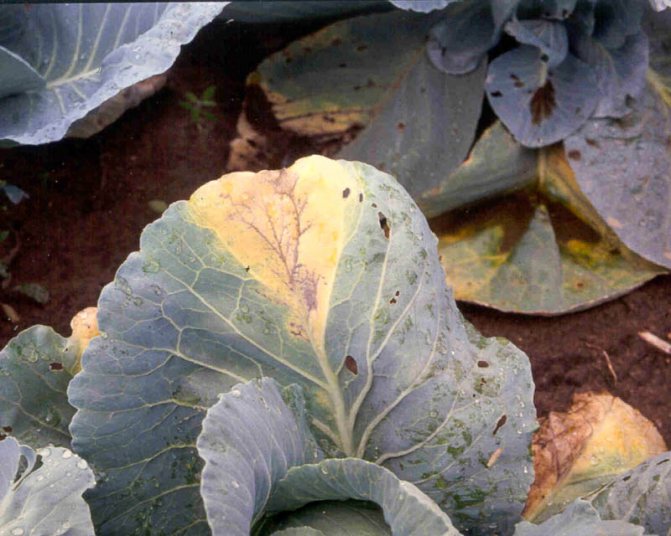

Vascular bacteriosis progresses during storage, rendering the heads of cabbage unusable. Vascular bacteriosis is often followed by wet rot.
Sources of infection are infected seeds, infected plants, including testicles, as well as infected plant debris. Sometimes cabbage weeds can also become a source of infection.
During the growing season, bacteria from a diseased plant to a healthy one are carried by the wind, raindrops, insects and slugs. Bacteria enter plants through mechanical damage caused by pests. After that, they easily penetrate into the vascular system of plants, causing them to wilt.
The development of vascular bacteriosis progresses with heavy rainfall in the second half of the growing season.
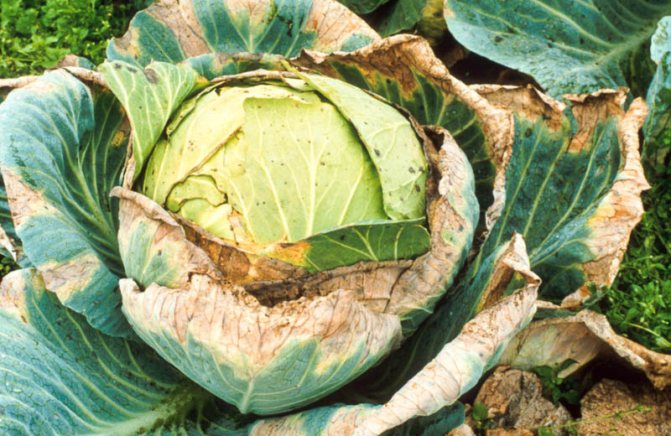

Favorable conditions for growth
Now let's figure out what cabbage needs, in the garden, in the field. Cabbage grows in height, what should I do?
- Shadow.
- Excess or lack of moisture.
- Bust with top dressing. If there is too much of it, and it happens that there is too little, the plant also grows.
- The cabbage is planted too close together.
- Crops are planted nearby that take too much nutrients.
- Clogged garden with weeds.
- Firm, loose soil next to the vegetable.
Otherwise, there are no contraindications for the normal growth of this vegetable.
Black spot, or cabbage alternariosis
Black spot manifests itself on both young and adult cabbage plants, especially on the testes - during their ripening and harvesting.
Black necrotic stripes and spots are formed on the cotyledon leaves and stems of cabbage seedlings. In older cabbage plants, dark necrotic zonal spots up to 10 mm in diameter are formed on the upper leaves of the heads of cabbage, with a loose black bloom resembling soot. The affected tissue may fall out over time, as a result of which holes are formed on the leaves.With a strong development of black spot, the covering leaves of cabbage die off. The disease is caused by the fungi Alternaria brassicae Sacc. and Alternaria brassicicola Wilts.
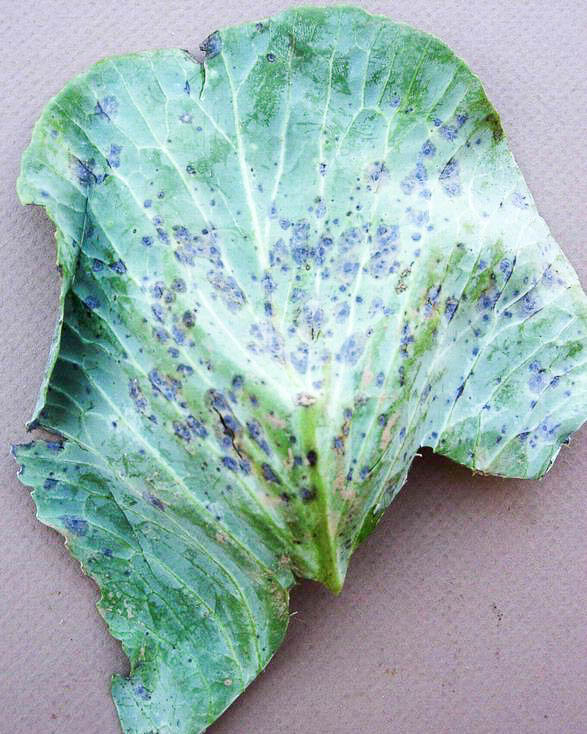

The development of black spot is facilitated by the abundance of precipitation, relative air humidity 80-100%, air temperature + 20 ... + 25 ° С and thickening of plants. The incubation period of Alternaria at a temperature of + 25 ° C is only 1-2 days.
Plant debris is the source of Alternaria infection. In addition to white cabbage, these pathogens affect not only cabbage plants and weeds from the cabbage family, but also many other vegetables (potatoes) and ornamental crops (juniper).
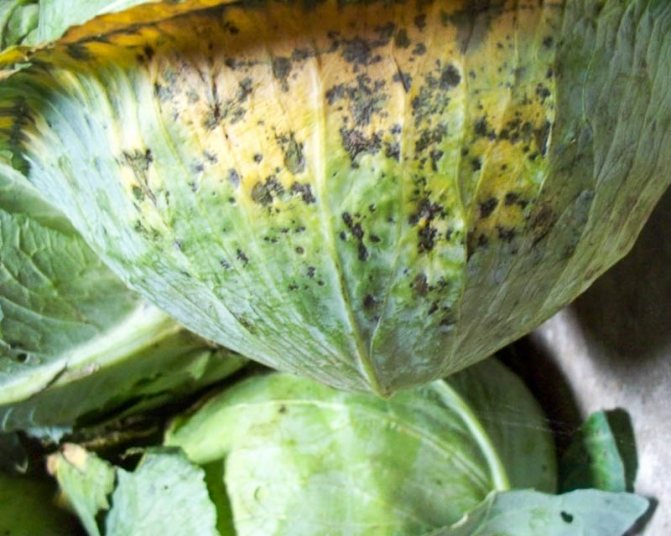

Making a choice
| Attention | |
| Most often, the packaged seeds are already ready for sowing. But if they are not treated with a special composition (unpainted) or coated, then for a more friendly germination, it is a good idea to pre-soak them in a solution of trace elements for 12-24 hours. Soaking in a solution of macronutrients (5 g of potassium nitrate, 10 g of superphosphate, 0.2 g of magnesium sulfate are taken per 1 liter of water) also improves germination. To get strong healthy shoots, the seeds can be kept in a growth regulator solution before planting. | |


Depending on the varietal characteristics, the shape, color and nutritional properties of the head of cabbage vary greatly. Most often, white cabbage varieties are divided into three groups according to ripening periods: early, middle and late ripening. According to this indicator, the directions of their use are also determined. The early one serves, as a rule, for preparing salads, side dishes and first courses. Mid-season varieties are better than others for fermentation, and late varieties are better for long-term storage and eating in the winter.
Gray rot of cabbage
On defeat gray rot (botrytis) cabbage heads become soft, gray mold appears on the leaves. Heads of cabbage affected by gray rot most often rot in storage, starting from the lower leaves, especially if these leaves are withered or frostbitten.
Gray rot of cabbage is less common when dry and wet, although in some warm, humid years, if there is an infection in the soil and storage areas, it can cause significant harm.
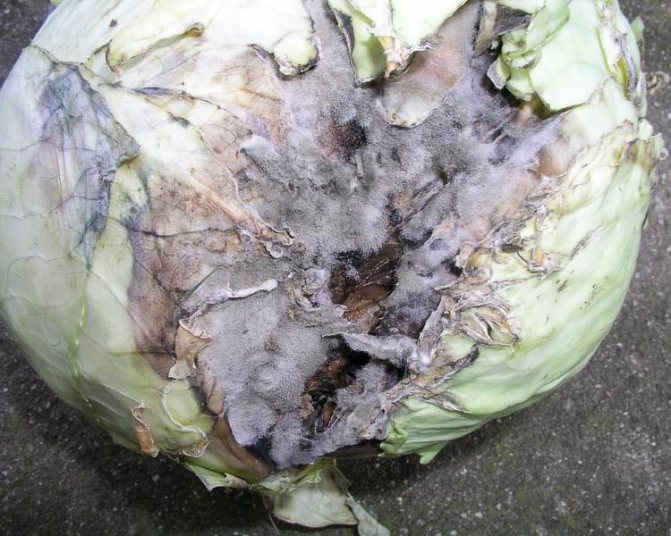

Keela cabbage
Keela - a fungal disease that affects the root system of all types of cabbage, turnips, radishes, radishes, and sometimes rutabagas. Keela appears on the roots of plants in the form of outgrowths and swellings ranging in size from a large pinhead on seedlings to an apple in adult plants. Kidney-shaped thickenings on the roots when the cabbage is affected by the keel can be easily confused with the galls of the lurking proboscis.
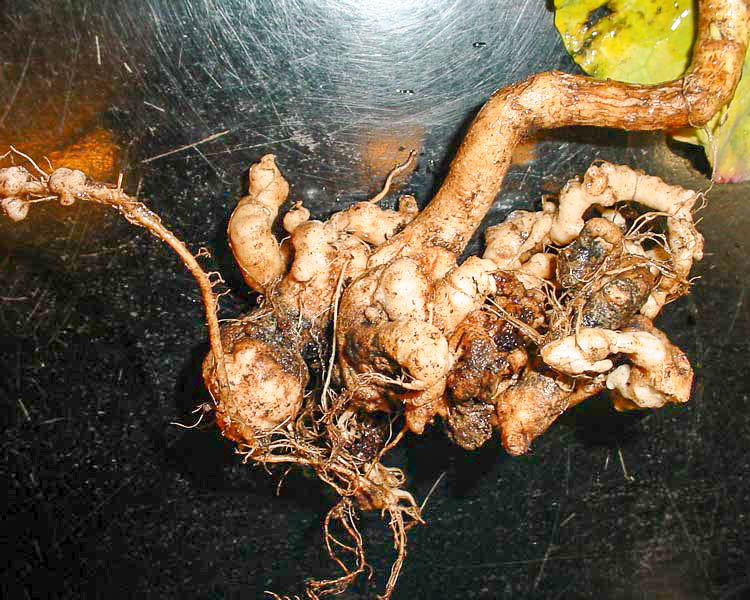

Plants are infected at the very beginning of their development, through the soil, where keel spores persist for several years. The keel grows most strongly on heavy clayey and acidic soils. Cabbage seedlings affected by the keel almost do not differ in appearance from healthy ones. Cabbage plants affected by the keel at an older age greatly lag behind in growth, wither and die.
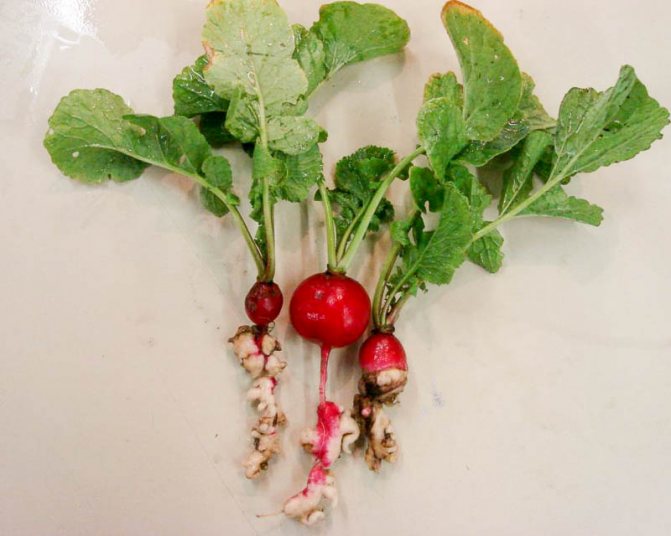

The fungus that causes keela persists for a long time in the soil. Therefore, cabbage and other cabbage plants are planted on the same garden bed after 5-7 years, the soil is constantly loosened and mustard or oil radish is not used as a green fertilizer.
If a keel appears on the site, monitor the acidity of the soil. A direct fight with the keel is almost impossible. For prophylaxis, the soil is limed to reduce acidity, trying to bring the reaction of the soil to pH 7.0. Additionally, lime is added to the holes when planting cabbage.
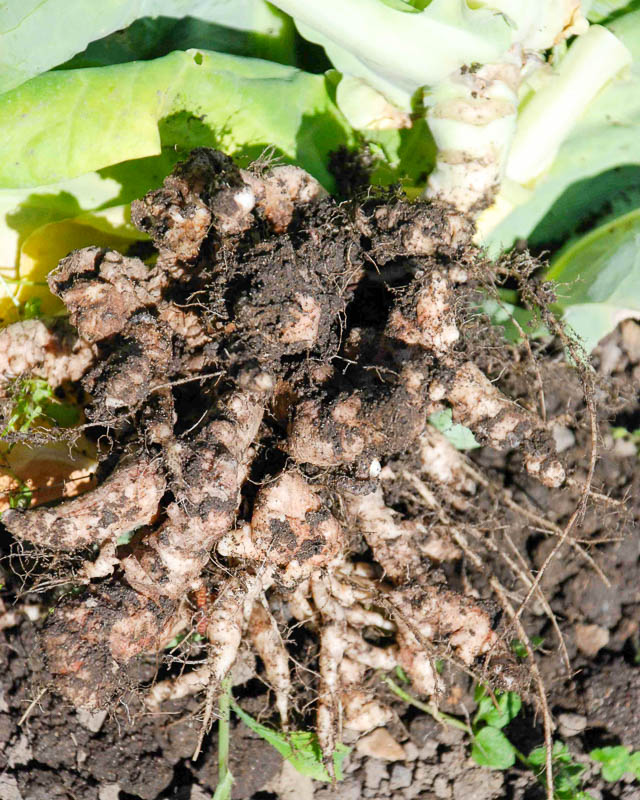

Why does cabbage stretch out after disembarkation and what to do about it
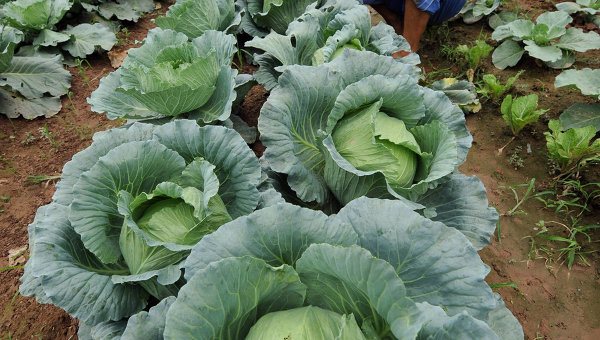

Before describing the problem with cabbage heads, you should first understand a little about its physiology, and below we will already consider what to do if the cabbage begins to grow up.
So what is cabbage? This name hides a perennial plant, the cruciferous family, in which there are about thirty-five species.The main habitat is located in the mid-temperature humid zone of the Mediterranean and the European part of the continent. Although there are exceptions, wild cabbage has also been seen in northern Africa and Asia.
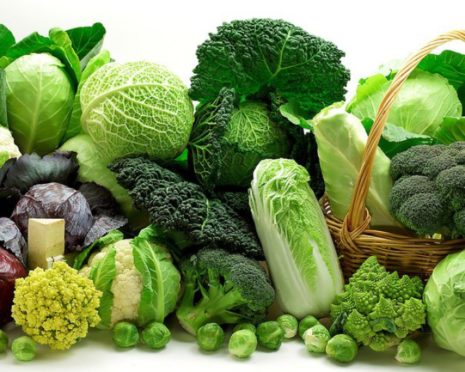

The main cultivation of the plant is domesticated, cultivated species.
About ten species grow on the territory of the former CIS. The most popular types are:
The stem is erect, pinnately-split or lobed. The root system of cabbage is fusiform. The arrangement of leaves on the stem is in turn, the lower ones of which form a kind of "rosette". The flowers of the plant form shields or brushes. The petals of the corolla are yellowish in the form of marigolds with a back - oval limb. The stamens are free, at the beginning of each there are honey glands. In the pistil of the plant there is a small column, a large two-lobed stigma and a sessile ovary.
Rhizoctonia of cabbage
Rhizoctonia - a fungal disease of cabbage, the causative agent of which is the mushroom Rhizoctonia solani. The causative agent is not picky about environmental conditions, therefore, cabbage rhizoctonia can develop at large fluctuations in temperature (from +3 to + 25 ° C), soil moisture (from 40 to 100% of full moisture capacity) and substrate acidity (pH from 4.5 to 8 ). The mushroom has no rest period.
When the causative agent of rhizoctonia is in contact with the root collar of cabbage seedlings, the stem turns yellow, dries up and dies, the cabbage seedlings die.
If the disease began with leaves, then small roundish yellowish-orange spots form on the affected cotyledon leaves.
If the roots are affected, they are soaked, but with constant hilling of the cabbage above the affected area, additional roots can form.
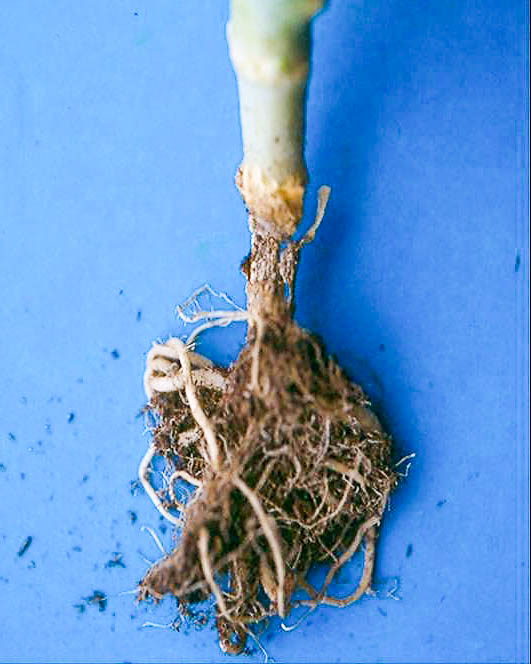

Infection with rhizoctonia occurs when the infected land gets on the cabbage leaves or when the leaves come into contact with the ground. On the leaf stalks of cabbage, oblong, deepened, light brown ulcers up to 2–2.5 cm long are formed. On the leaves in contact with the soil, after infection, large, blurry brown spots are formed.
Rhizoctonia continues to develop on affected heads of cabbage and during storage. At the same time, the leaves on the infected head of cabbage are easily separated from the stump, which significantly reduces the weight of the heads.
The fungus is preserved in the ground and on plant debris. The duration of preservation of fungal spores in the soil without a host plant is 5–6 years. Throughout this period, the causative agent of rhizoctonia remains pathogenic. Rhizoctonia is a very insidious and dangerous disease that can infect many vegetable crops, for example, potatoes, in which the disease causes damage to the tubers, also called black scab.
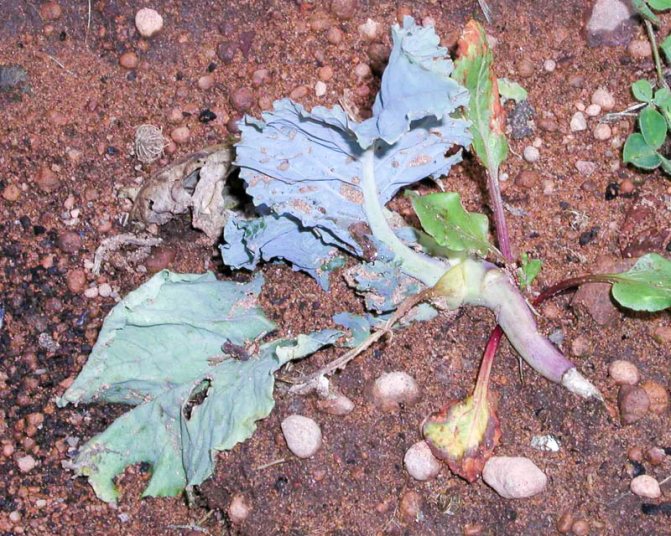

Landing
Let's figure out the correct planting of this plant, or rather its cultivated species.
There are two ways to grow cabbage:
- Seedling.
- Growing without using seedlings.
Basically, on the territory of the CIS, the first is used, on which we will dwell.
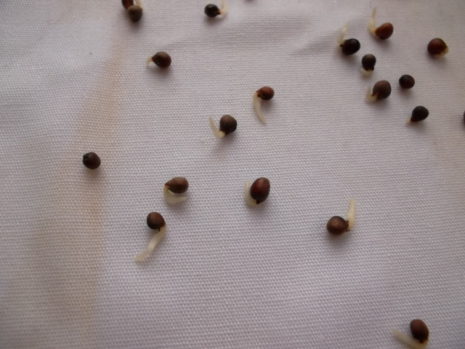

The cabbage needs to be germinated. To do this, you need to prepare a hotbed or greenhouse. Take a low box filled with decomposed peaty, non-acidic soil or regular turf soil. It should be found when germinating indoors on windows facing the south side or on the street - it should be well insulated with a film on top and located in a lighted place.
Seeds are planted after germinating them and selecting large ones. Then warm them up a little, putting them in warm water for twenty minutes. Next, you need to cool the seed by dipping it into running water for a couple of minutes. Next, the seeds are placed in a damp cloth or gauze, they are expected to germinate. After the sprouts break through the pleura of the seed, they are planted in a prepared box, to a depth of no more than 1.5 cm. Next, the seedlings are watered so that the earth is slightly moistened.
Within four days, the seeds will have their first borings.
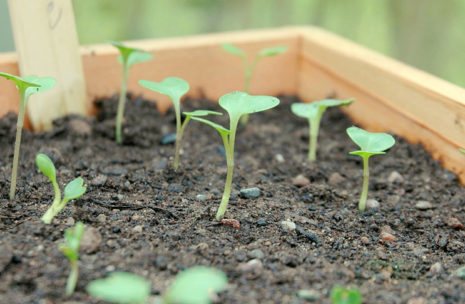

Two weeks later, the first normal leaves appear and at this moment the seedlings are transplanted separately from each other, preferably in separate, own pots. The composition of the soil for the pots is slightly different: we do it in a ratio of 7: 2: 1: 1, for peat, humus, sod land and mullein (everything is taken proportionally, that is, 7 parts of peat, two parts of humus, etc.). Sod land can be replaced with pond silt. In the absence of peat, the proportions are used: 1: 3: 6 for mullein, turf and humus.
After planting, when the plant takes root, it is transferred to a greenhouse in a new place. The greenhouse should be warm and light. Horse or cow dung gives warmth, the mixture of which is sprinkled with earth between the pots installed in the greenhouse.
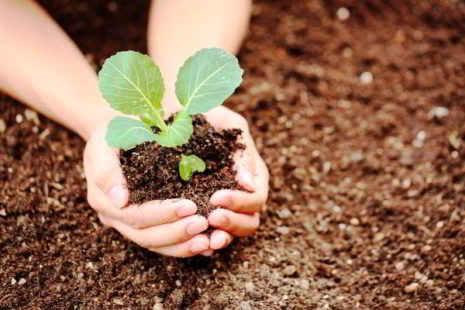

They are planted in holes dug to a depth of 10 cm in well-loosened beds. Wells must be well shed before planting cabbage in them. After placing the sprout in the hole, it is sprinkled with earth and watered again. The holes should be made approximately 40 centimeters apart. As long as the cabbage grows, it is well watered, until the time of harvest. And how the cabbage stretched out in the garden, what to do and its photo, see below.
Fusarium wilting, or cabbage tracheomycosis
The causative agent of the disease is the soil fungus Fusarium oxysporum (syn. F. conglutinans), which retains its viability for several years. Fusarium wilting - a very dangerous fungal disease. Cabbage is most vulnerable to fusarium wilt during the period of growing seedlings and planting them in open ground. During this period, fusarium wilting can destroy up to 20-25% of the total number of plants.
The main sign of fusarium wilting is the yellow-green color of the leaves and the loss of turgor. Diseased leaves fall off, the head of cabbage bends, and in case of severe damage, only a small bare head of cabbage, devoid of outer leaves, remains. The fungus enters the plant through the roots or through damage caused by pests, spreads through the vessels to the aboveground part and significantly impedes the movement of water in the plant.
Massive wilting of cabbage is observed in years with hot summers. Optimal conditions for the development of the fungus are formed when the soil warms up to +15 + 17oC. Air temperature and humidity have no significant effect on plant infection.
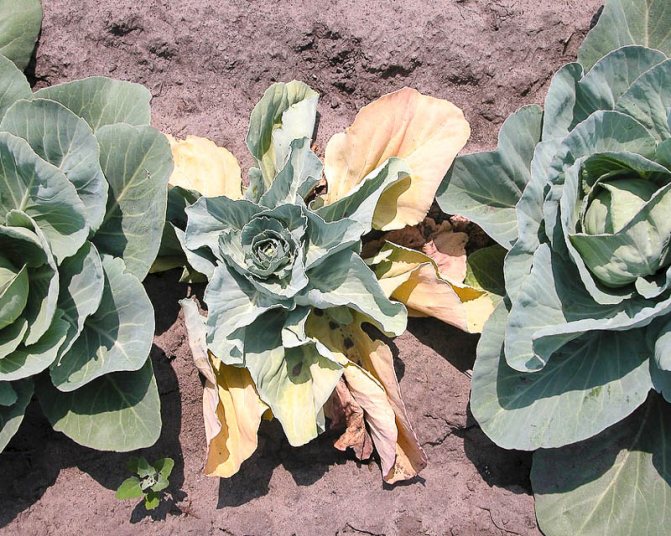

Growing lettuce
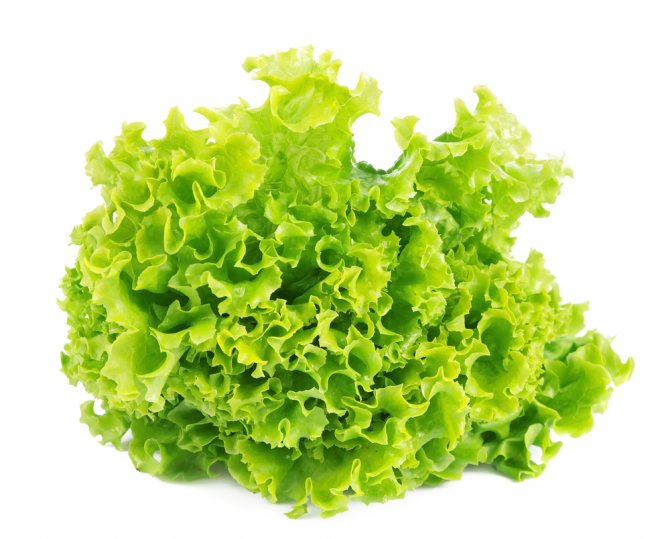

The homeland of the salad is the Mediterranean. It was grown by the ancient Greeks, Egyptians and Romans. In Europe, since the 14th century, lettuce has been cultivated in greenhouses and served at the royal table in winter. Currently, various forms of lettuce are common in Europe and the United States. In Russia, lettuce is very popular and is grown both outdoors and in greenhouses.
There are currently four main types of lettuce: asparagus lettuce, lettuce, romaine lettuce, and head lettuce.
Lettuce is an annual plant, first a rosette of basal leaves grows, and then a peduncle. Leaves can form a head of cabbage. The color of the leaf depends on the variety and can be from dark green to pale yellow.
Lettuce is a cold-resistant plant, the seeds germinate at temperatures from +5 degrees and germinate in a week. Young shoots tolerate frosts down to -5. The salad loves light and moisture. In hot weather, flower stalks form quickly and the bitterness of the leaves increases. Head lettuce forms dense heads of cabbage when the difference between day and night temperatures is less than 8 degrees. The plant prefers loose soils with a neutral reaction of the environment and is very picky about the mineral composition of the soil.
Peronosporosis, or downy mildew of cabbage
Downy mildew of cabbage - a fungal disease caused by the fungus Peronospora parasitica brassicae. Downy mildew is most harmful to cabbage seedlings and seed plants. The first signs of damage by downy mildew appear on the seedling cotyledon leaves in the form of yellowish blurry spots, in the same place on the underside of the leaf a grayish-white bloom of fungal sporulation is formed. Gradually, the leaves turn yellow and die off.


The source of the disease can be seeds, soil, plant residues in greenhouses, nurseries. For the development of downy mildew, a favorable temperature is +20 + 22 ° C.After planting cabbage seedlings in open ground, the development of downy mildew stops, although the fungus remains in the plant. In wet weather, downy mildew reappears on cabbage leaves in the form of reddish-yellowish spots with a touch of mycelium on the underside. Downy mildew can also hurt other vegetable crops, for example, onions, peas, cucumber, melon, watermelon, pumpkin.
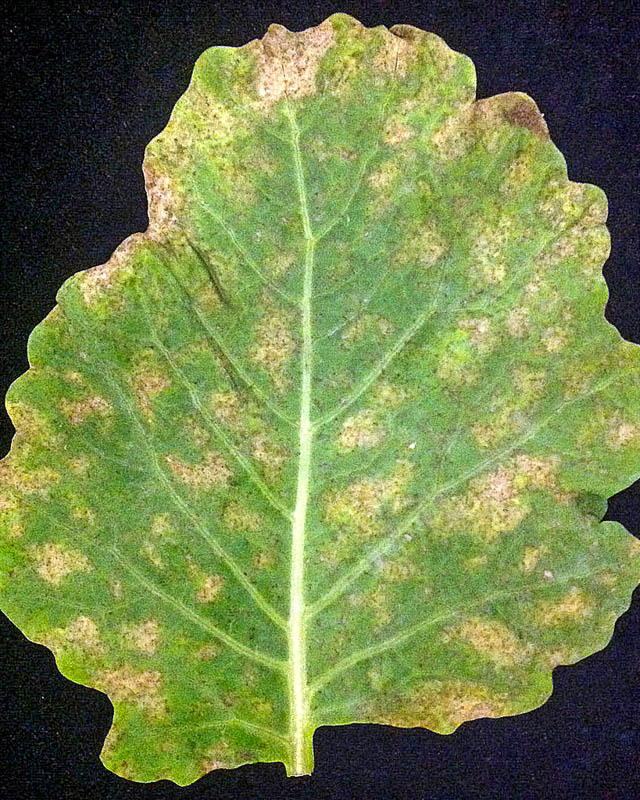

Sowing is the beginning of everything
In Russia, cabbage is often grown through seedlings. High-quality varietal seeds are the key to obtaining strong seedlings, as well as the subsequent high yield. Then the area of protected soil allocated for sowing will be used as efficiently as possible, the seedlings will be friendly, and the seedlings will be leveled.
Traditionally, cabbage seeds are sown in boxes or on ridges in rows, the distance between which is 5–6 cm. It is convenient to sow in plastic seedling cassettes, the cells of which are filled with a substrate, the main component of which is peat, since it is this that contributes to the formation of a powerful root system. When growing seedlings in cassettes, seed consumption is significantly reduced, and weeding, as a rule, is not needed, since there are no weeds in the substrate. You just need to monitor its moisture content.
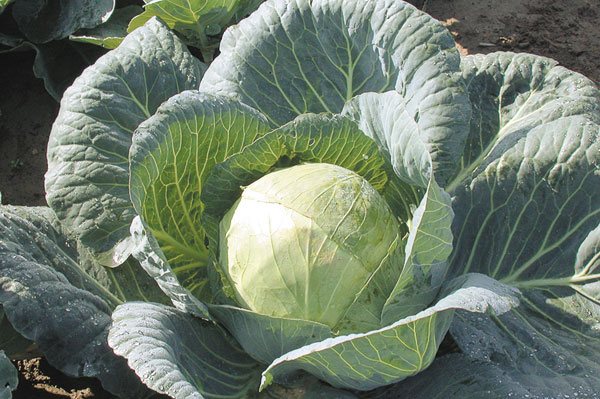

After sowing, the seeds are covered with the same substrate, slightly compacted and sprinkled with perlite to prevent rapid evaporation of moisture. Despite the fact that they are already sowing in wet soil, watering must be carried out after sowing.
Darkening in the middle of the head
Darkening in the middle of the head is not a disease. The reason for this damage to the head of cabbage is the prolonged exposure to low temperatures on the cabbage in the garden or in the storage. Although cabbage can tolerate short-term frosts down to –8 oC without visible consequences, autumn frosts are often strong and prolonged.
Cold damage to cabbage is often irreversible. The leaves of several layers inside the head become glassy, while the outer leaves are quite healthy. After some time, the affected leaves inside the head of cabbage acquire a reddish or reddish tint (such damage to the cabbage is called a "red heart"), if it gets into heat, it can turn black, emitting an unpleasant odor. Similar symptoms can occur in cabbage storage areas with low oxygen levels and high carbon dioxide content.
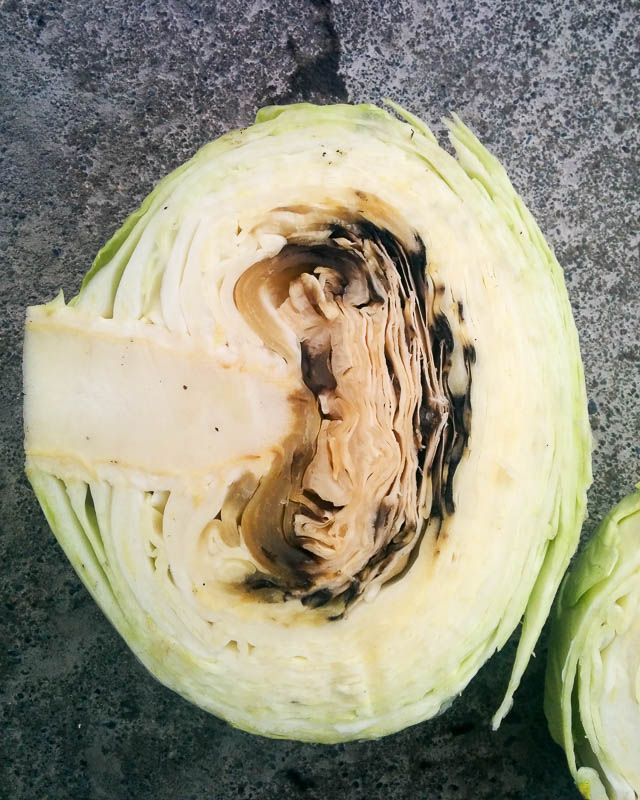

Cabbage affected by frost must not be stored. The top healthy leaves of frozen kale can be processed or used as food.
In order not to expose cabbage to subzero temperatures, the crop must be harvested before the approaching severe frosts. For long-term storage, cabbage is harvested altogether before the onset of sub-zero temperatures.
By frost (–3 –4oC), mid-season cabbage is usually harvested, which is used for pickling. Lowering the temperature for a short time improves the palatability of the cabbage, it becomes sweet and juicy, which is why sauerkraut is so delicious.
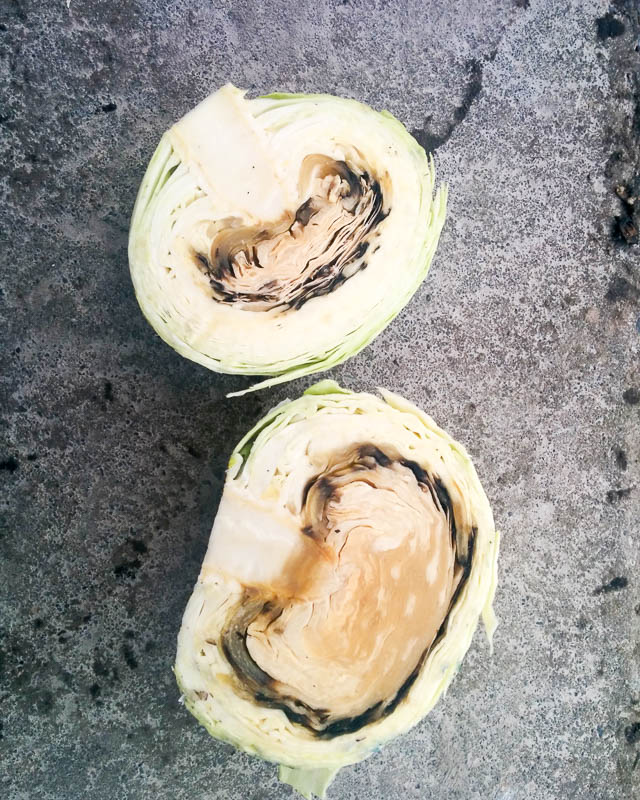

How to plant
After planting the seeds, cover the container with a transparent film and keep it until germination. Then we open the processes. The best temperature for germinated seeds is no more than 15 degrees. Therefore, if the house is hot, it is necessary to ventilate the room. It is advised to plant when the heating is turned off.
Planting in the soil occurs when four leaves appear, and the sprout becomes more than ten centimeters. It is dense, strong and flawless.
This culture is very fond of plentiful watering, only in the fall, before cutting the heads of cabbage, you need to stop it for several days.
Heads of cabbage will be large, even, juicy, if you use top dressing in time, loosen the ground, spray from harmful insects. Of the fertilizers, the vegetable prefers ammonium nitrate, nitrogen minerals, humus.
Insects often attack this vegetable, so it needs special protection from them. The most dangerous pests for cabbage are beetles, whitefly butterflies, flies, moths.
Cabbage mosaic
Chaotic yellow spots, strokes, rings appeared on cabbage leaves - this may be a manifestation viral mosaic... Mosaic can affect almost all types of cabbage, as well as radishes, radishes, rutabagas, turnips. The virus is transferred to plants by sucking insects: aphids, thrips, spider mites.
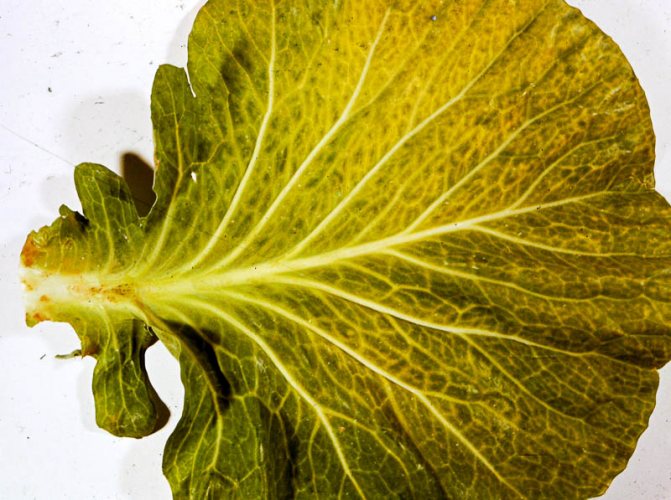

There are no means of struggle against the mosaic of cabbage; it is necessary to fight against insect pests. When the mosaic appears on cabbage leaves, all plants with a mosaic pattern will have to be removed and destroyed in order to prevent the mosaic from spreading to other plants. As a preventive measure, insecticide spraying can be offered.
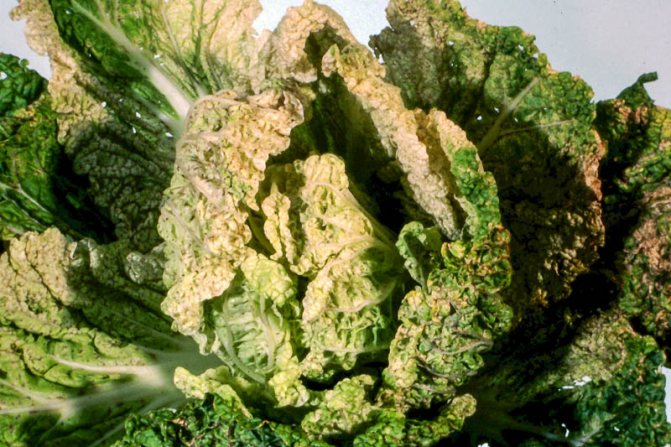

Top dressing
Not only do you fill the soil well with humus before planting, a capricious culture must be fed every three weeks. I make the infusion like this: I fill the bucket half with fresh manure, pour water. I leave it for a week. If there is no manure, I chop up young nettles, wrinkle it a little to give juice.
Nettle green manure is also a great growth stimulant.
A few words about manure. The most nutritious is the horse, followed by the cow. From a pigsty with sawdust it is infused worst of all. It is suitable only for application to poor soil. For the first feeding, I add a matchbox of urea to the infusion. In the next I add superphosphate in the same volume. By the way, it only dissolves in hot water.
The norm of the slurry for irrigation is a half-liter container for a large bucket. I pour the resulting solution into a ladle under each head of cabbage. Sprinkle the cabbage with wood ash between dressings. Slugs do not like her, she goes instead of potash feeding. My opinion is that there is never too much ash for cabbage. It is recommended to adhere to the standards: 2 glasses of ash are recommended to be insisted in a bucket of water. The infusion is introduced during the formation of heads of cabbage by a liter for each plant.

